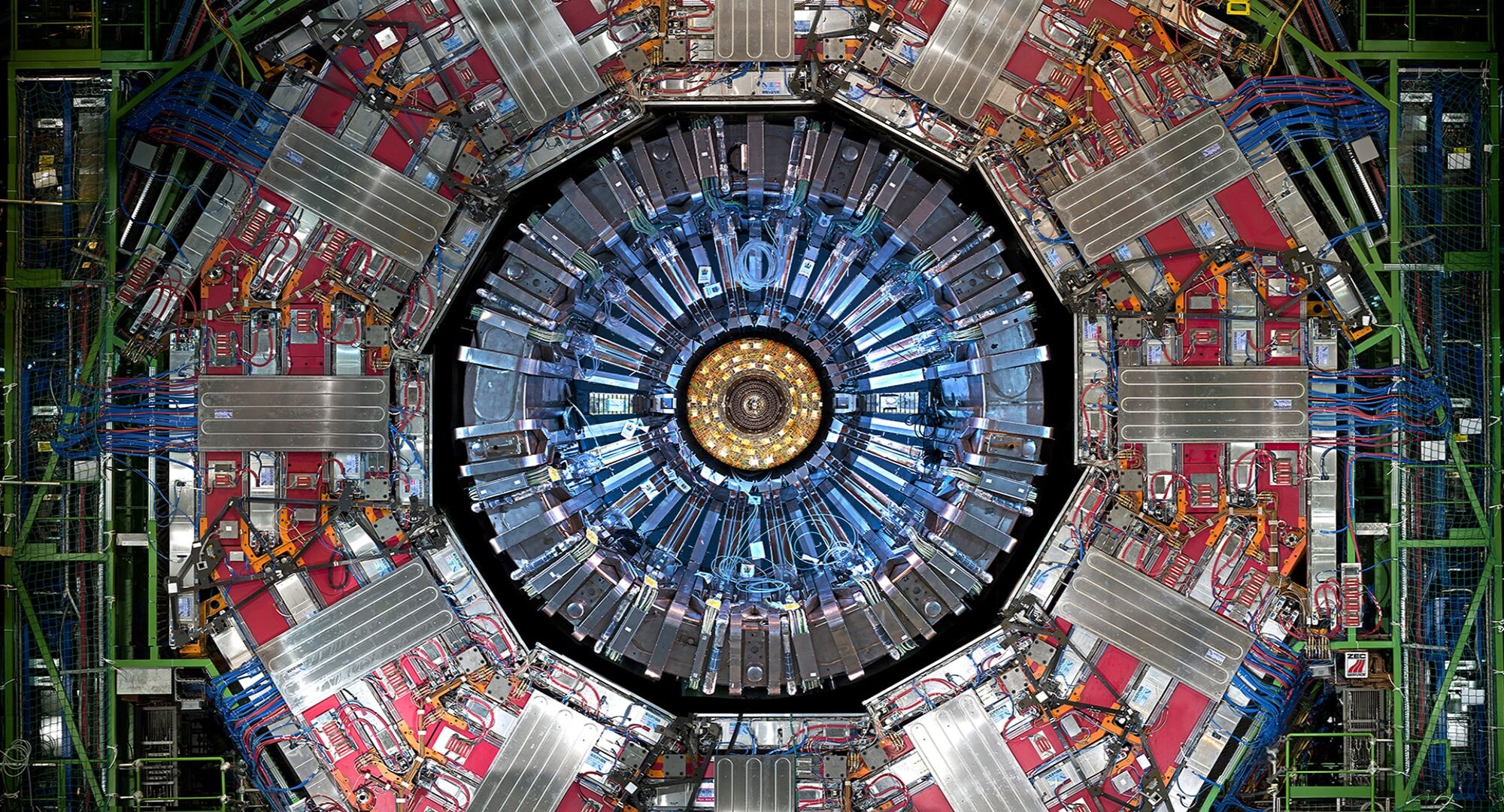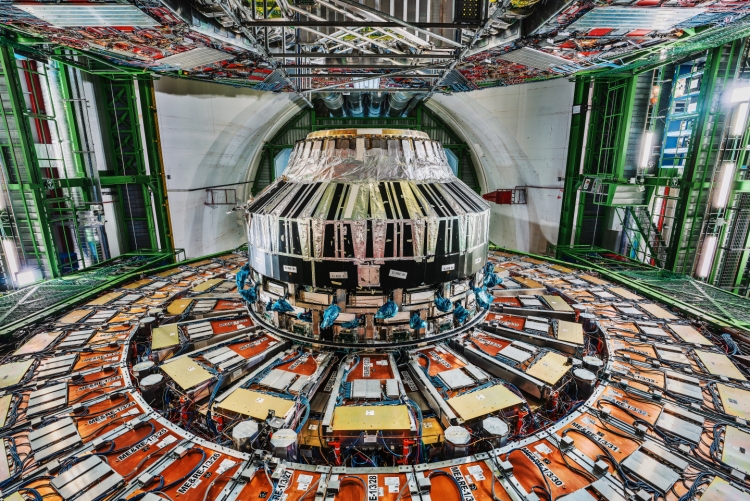The research at the LHC is central to the quest for the fundamental physics laws of Nature. LIP is member of the Compact Muon Solenoid (CMS) Collaboration at the Large Hadron Collider (LHC) since its creation in 1992.
The LIP-CMS group had a leading role in the design and construction of important components of the CMS detector, namely the Data Acquisition System of the ECAL sub-detector, used for the measurement of electrons and photons, and the trigger system that performs the online selection of the interesting collisions.
Since the LHC start-up in 2010, LIP made major contributions to the CMS physics program in particular: the discovery and characterization of a Higgs boson; measurements of the top quark properties; the first observation of rare Bs meson decays, studies of B-decays and Y states in pp and heavy ion collisions; measurement of the chi and upsilon polarizations; searches for a charged Higgs, a top squark, and for Dark Matter; search for exclusive processes. A group member served as Deputy Spokesperson of the Collaboration in 2012-13.
The group contributed to the Phase-1 Upgrade of the experiment by building and installing new High-Speed Optical Links (oSLB-oRM) that interface the ECAL electronics to the trigger system. During the long shutdown LS2, the group was involved in the preparation of the PPS and the ECAL detectors.
The group is leading the development of the forward Precision Proton Spectrometer (PPS) since its inception in 2014. PPS demonstrated -for the first time- the feasibility of operating a near-beam proton spectrometer at high luminosity on a regular basis. PPS took physics data integrated in CMS in 2015-18 and is continuing taking data in Run3 (since 2022). A member of the group is the PPS Project Coordinator.
In the High-Luminosity phase of the LHC physics program starting in 2030, the accelerator will provide an additional integrated luminosity of 3000 fb-1 over 10 years of operation. The group participates in the construction of a new Timing Detector and in the upgrade of the Barrel and Endcap calorimeters. The group is responsible for the design and construction of the readout system of the Barrel Timing Layer (BTL), including a high-performance TOF ASIC for time measurement. In collaboration with the Portuguese industry, LIP provided a high-performance ADC ASIC for the ECAL front-end electronics resistant to radiation. The CMS upgrade also includes the complete replacement of the Endcap calorimeters with a new high-granularity sampling calorimeter. LIP collaborated with Portuguese industry by supplying a high-current low voltage regulator (LVR) resistant to radiation for the High-Granularity Calorimeter (HGCAL) frontend system. The group is also involved in the upgrade of the PPS detector for HL-LHC, specifically in the area of precision timing detectors.
THESES OPPORTUNITIES
JOIN US AT THE LIP-CMS GROUP TO EXPLORE THE WORLD OF HIGH-ENERGY PHYSICS.

